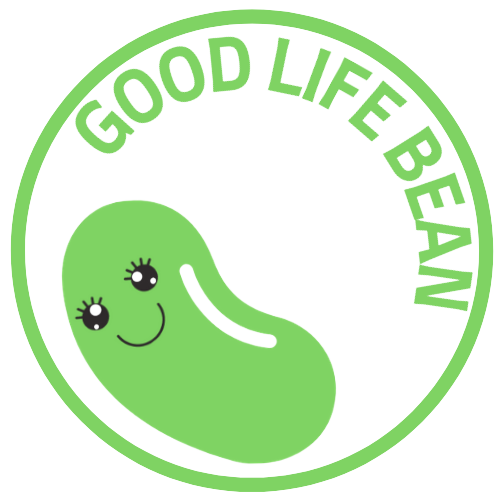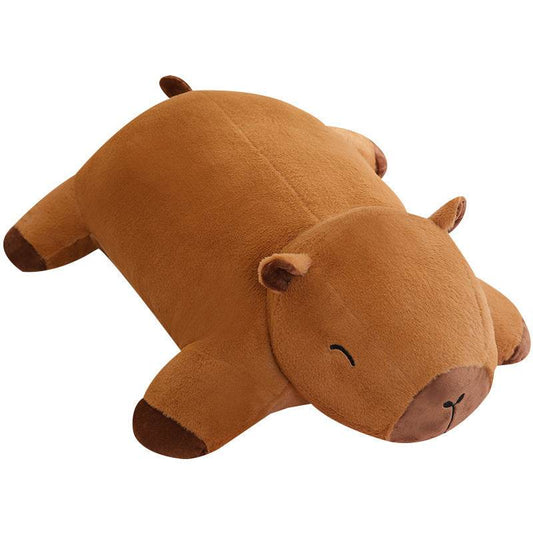The Science Behind Why Plushies Are So Comforting
We all know stuffed animals and giant teddy bears are adorable—but did you know they’re also doing serious work behind the scenes? Recent research shows that cuddling a plushie doesn’t just feel nice—it actually dampens stress signals and unleashes feel-good hormones. In other words, plushies can literally rewire your brain toward a calmer, more relaxed state. From boosting oxytocin (the “cuddle hormone”) to activating vagus nerve responses, adults everywhere are turning to plushies as a science-backed form of self-care.
At GoodLifeBean, our collections—ranging from Body Pillow Plushies to Giant Teddy Bears—make it easier than ever to find your perfect “soft therapy buddy.”

The Neuroscience of Comfort: Oxytocin, Vagus, and Stress Hormones
When you hug a plushie, your body isn’t just reminiscing about childhood—it’s triggering a powerful biological response. Pressure receptors in your skin activate the vagus nerve, which slows your heart rate and lowers cortisol (the stress hormone). That’s why hugging a plushie feels as calming as a gentle massage or a hug from someone you love.
Meanwhile, your brain releases a cocktail of oxytocin, dopamine, serotonin, and endorphins—aka your natural “happiness chemicals.” Every squeeze of your plushie mimics the neurochemical reward of snuggling with a friend, making plushies a simple yet effective anxiety relief tool.
Plushies as Transitional Objects: Comfort Beyond Childhood
Psychologists call plushies “transitional objects”—comfort items that help regulate emotions. While once thought of as just for kids, newer studies show that adults benefit just as much. In fact, many young adults report that stuffed animals help them unwind after stressful days or even fall asleep faster.
A recent study of college students revealed that interacting with a plushie lowered stress and promoted relaxation. That familiarity and unconditional “companionship” cues your brain to feel safe—strengthening comfort signals over time.
Plushies vs. Technology: Hugs Win Every Time
Think your phone call with a friend is enough to calm your nerves? Science says otherwise. One fascinating study showed that hugging a plushie during a conversation lowered cortisol significantly more than just using a phone. So next time anxiety spikes, don’t just reach for your phone—reach for your plushie too.
Weighted Plushies and Deep-Pressure Stimulation
Weighted blankets went viral for a reason—and plushies work the same way. Large body-pillow plushies like capybaras or alpacas offer deep-pressure stimulation that reduces anxiety and helps the nervous system reset.
Better Sleep Through Snuggles
If insomnia keeps you up at night, the cure might be sitting right on your bed. A bedtime cuddle with a plushie can kickstart your body’s sleep signals. Studies show that holding a soft object before bed improves relaxation, helping people fall asleep faster and sleep deeper.
It’s not just comfort—plushies also boost serotonin and melatonin while lowering cortisol. This perfect neurochemical balance trains your brain to associate plushies with winding down, making them a natural sleep aid.
Brain Rewiring: Why Plushies Build Emotional Resilience
Every time you calm down while hugging a plushie, you reinforce the brain pathway that says “plushie = safety.” Over time, this practice helps your brain default to a calmer state, dampening the reactivity of the amygdala (your stress center). It’s like building your own emotional resilience gym—except way softer.
Adults and Plushies: Breaking the Stigma
Still think plushies are just for kids? Think again. Recent polls suggest that 1 in 5 adults still sleep with a stuffed animal. Wellness experts now recommend plushies as legitimate anxiety relief tools—sometimes even more effective than apps or gadgets.
So if you’re Gen-Z (or beyond), go ahead—stack your plushie squad on your bed or desk. It’s not just cute; it’s smart self-care.
Tips for Choosing and Caring for Your Plushie
- Pick the right size: Go big with Giant Plushies or Body Pillow Plushies, or grab mini plushies for quick stress relief at work.
- Create a ritual: Hug your plushie while breathing deeply to train your brain to relax faster.
- Add your scent: Plushies that smell like you strengthen the safety cue.
- Keep them clean: Check care tags and wash gently to maintain softness.
- Bring them anywhere: On planes, at the office, even on Zoom calls—plushies work everywhere.
Meet Our Calming Plushies
Ready to put the science into practice? Explore our collections: Giant Teddy Bears, Body Pillow Plushies, and Anxiety Relief Plushies. Whether you need bedtime support or desk buddies, there’s a plushie designed for instant calm.
Conclusion: Embrace the Plushie Effect
Plushies aren’t “just toys.” They’re science-backed tools for mental health—soft, huggable allies that calm your nervous system and lift your mood. Every cuddle lowers cortisol, boosts oxytocin, and rewires your brain toward resilience. And beyond the science? They simply bring joy.
So the next time stress sneaks in, skip the scrolling and grab your plushie. Science says your brain will thank you.
















